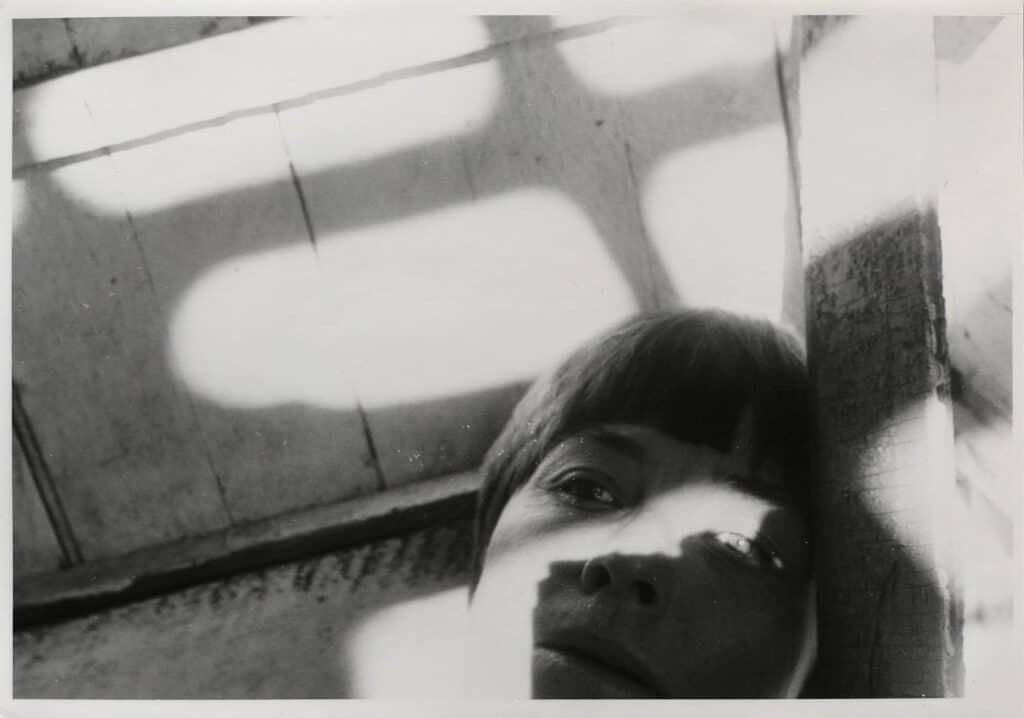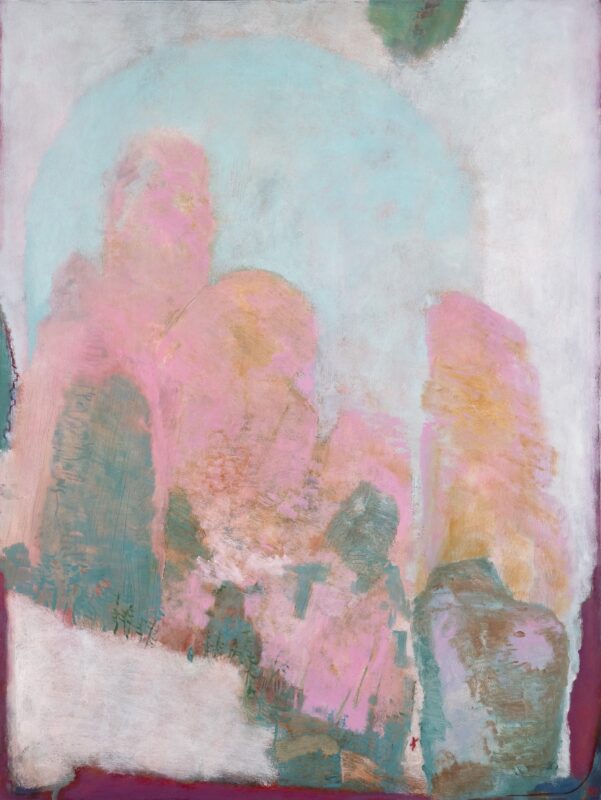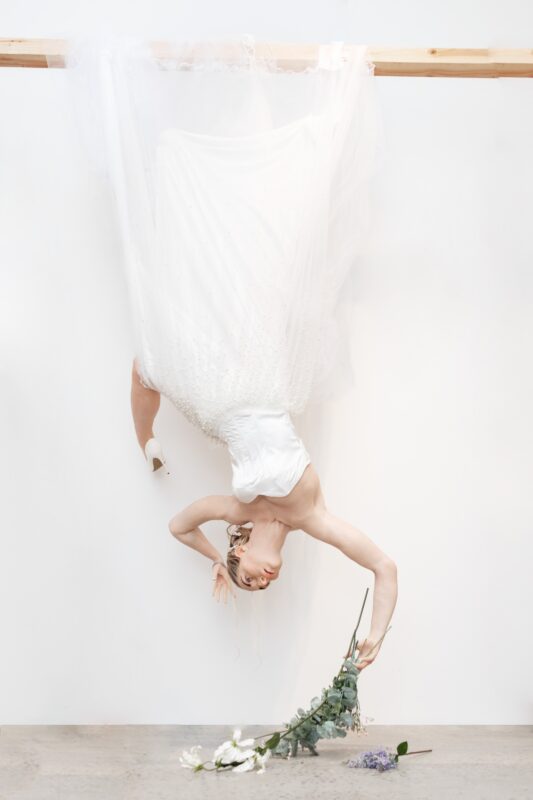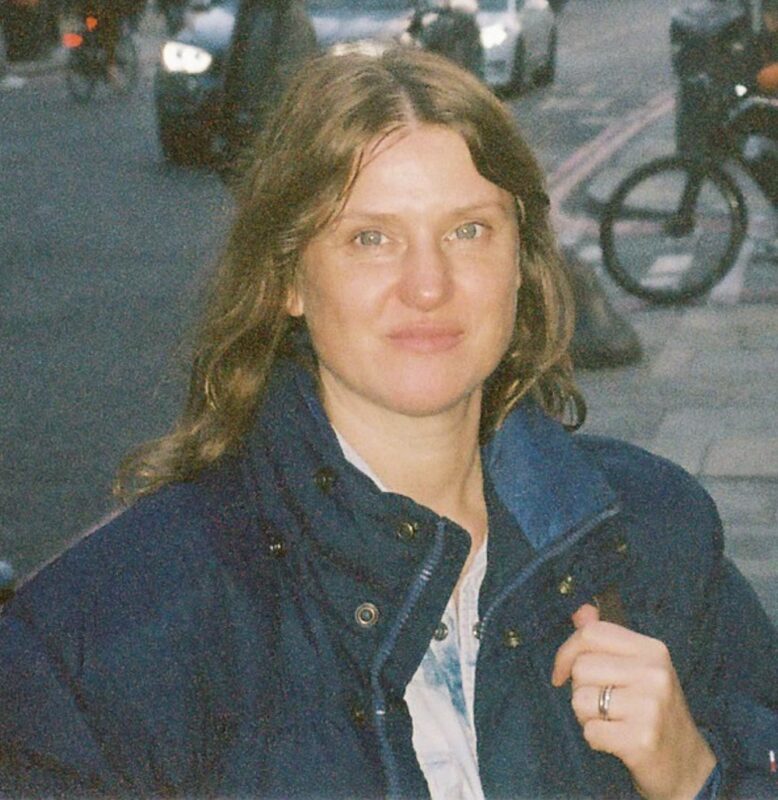
Centring on a selection of works that demonstrate the range of Hammer’s technical, figurative and abstract investigations in 16mm film, collage, drawing, and photography. This exhibition will explore the concept and themes of “mirroring” and features never before seen archival material from Hammer’s life and career between the years of 1968 – 1981, McClodden’s year of birth.
Barbara Hammer Tell me there is a lesbian forever… Curated by Tiona Nekkia McClodden October 2nd – November 6th companygallery.us
About the Artist
As a child, Barbara Hammer “always wanted to live up to my name.” As an adult in the 1970s, she got her wish: Her striking voice rang out in groundbreaking films that celebrated female sexuality just as she was discovering her own, during the decade she called “that glorious time of feminist ideals and lesbian bed-hopping.” Hammer, who created more than 100 films on widely diverse topics over the next 40 years, died in New York, March 16th at age 79. Hammer’s partner of 31 years, Florrie Burke, confirmed Hammer’s death from endometrioid ovarian cancer.
Hammer was first diagnosed with the disease in 2006, but doctors who offered grim statistics neglected to account for Hammer’s preternatural energy, curiosity, and passion to create: In the 13 years following her initial diagnosis, Hammer made seven new films, published an autobiography, Hammer! Making Movies Out of Sex and Life, traveled to more than 20 countries, created two award programs for queer filmmakers, and had retrospectives at the Museum of Modern Art, the Tate Modern, the Jeu de Paume in Paris, and the Hammer Museum in Los Angeles. In the fall of 2017, the Leslie-Lohman Museum of Gay and Lesbian Art in New York mounted a retrospective of her film, photography, drawings, and sculpture, which New York Times art critic Holland Cotter named one of the best exhibitions of that year.
Hammer’s final work, Evidentiary Bodies, a three-channel film and installation with accompanying score, is scheduled to premiere in 2019 at the Wexner Center for the Arts in Columbus, Ohio.
“Barbara’s work is remarkable not only for the radical approach to representation it pioneered in the time that it was made, but because it will persist as a crucial blueprint for empowering our bodies and communities, even in times of fragility and pain,” said Stuart Comer, Chief Curator of the Department of Media and Performance at the Museum of Modern Art.
Born on May 15, 1939 in Hollywood, California, Hammer brushed up against film early on. Hammer’s mother hoped that “Barbie Jean”—who at age three displayed the breezy confidence that characterized her entire life—might become a star like Shirley Temple. That dream died when the family could not afford professional acting lessons.
One day after graduating from UCLA with a B.A. in psychology in 1961 (she later added two masters’ degrees), Hammer married Clayton Ward, whose proposal she’d accepted on the condition that he take her around the world. He did; they spent 12 months riding from Italy to Hong Kong on a 7500cc Lambretta motor scooter. Her passion for travel would later inspire several films, from the aptly titled Traveling (1970), which recorded aspects of a motorcycle trip through Europe and Africa, to Diving Women of Jeju-do (2007), for which she dove with Korean women who harvest shellfish from the sea floor without oxygen tanks.
Back in California after the round-the-world ride and searching for her path, Hammer followed an inchoate desire to be an artist: She enrolled in a painting course taught by abstract expressionist William Morehouse, who saw such movement in Hammer’s paintings that he encouraged her to experiment with film.
Using a Super 8 camera with a bifocal lens, Hammer made her first film, Schizy, which captured her feelings at the time. “I was literally a woman living in a man’s world.” The film earned an honorable mention at the Sonoma State Super 8 Film Festival, and Hammer launched her new life: as filmmaker, single woman, and lesbian—a word she’d never heard until the age of 30.
“When I made love with a woman for the first time my entire worldview shifted,” Hammer said. “In addition to the sensual pleasures, my social network completely changed; I was swept up with the energies and dreams of a feminist revolution.” Hammer made 29 films in the 1970s, many of which reflected her exploration of sex and identity.
Critic Rachel Churner wrote that Hammer’s films possess “a seemingly unlimited enthusiasm for exploring new bodies and new mediums; an earnest attempt to capture visually what it feels like to touch another woman; … and, above all, a radical openness and generosity with her collaborators on-screen—and with her audience.”
This generous spirit led Hammer to sponsor two awards for young filmmakers: The Queer Filmmaking Award, given yearly to a student by the Queer Institute at San Francisco State University, and the Barbara Hammer Lesbian Experimental Filmmaking Grant, given by Queer|Art in New York.
“Barbara was a buoyant presence whose work, spirit, and unique gift of tenacity and humor was an antidote to the useless posturing that the art world is famous for,” said filmmaker Daniel Eisenberg, a professor of film at the School of the Art Institute of Chicago. “She was generous in the most basic, human way—and she was always authentically herself.”
Throughout the 1980s and 1990s, the time of Reagan, AIDS, and heightened LGBT activism, Hammer’s films blended feminist politics, lesbian erotica, and social comment. Her first feature-length film, Nitrate Kisses (1992), spliced together historical images, interviews with gay couples, and scenes from James Sibley Watson and Melville Webber’s Lot in Sodom (1933) to create a portrait of the marginalization of LGBT people in the 20th century. The film was nominated for the Grand Jury Prize at the 1993 Sundance Festival and received the Polar Bear Award at the Berlin International Film Festival—and was labeled a “homoerotic film abomination” by right-wing organizations protesting the NEA grant Hammer had received to make the film.
Hammer’s following film, Tender Fictions (1995), examined the nature of truth in biography and autobiography, and featured images of Hammer’s life partner, Florrie Burke, whom Hammer met at the West Coast Women’s Music Festival near Yosemite in 1986. Burke was a psychotherapist and Clinic Director at UCSF when they met; she later began working with marginalized populations of immigrants, refugees and trafficked persons, and was the first recipient of the Presidential Award for extraordinary efforts to combat trafficking in persons during the Obama administration. Hammer and Burke’s 31-year relationship was rooted in humor, a shared passion for travel, and deep mutual respect for the other’s work. “I make films, but Florrie literally saves lives,” Hammer once said. After years of short-term relationships, Hammer wrote in her autobiography, “I had no idea that I would be so lucky as to be embraced by the wit, intelligence, passion, and steadfastness in one woman.”
“Barbara was the epitome of irrepressible joy and zest for all things alive in her life—hiking, swimming, fishing, blueberry picking, mediating on a poem, digging in the dirt, talking deeply with a friend, making a film, and loving her sweetheart Florrie,” said poet Janlori Goldman, a longtime friend. “Barbara brought play, depth, and a fourth dimension to every moment. We, her friends, and the larger communities she touched, are enlivened and changed for the better for her place in the universe.”
Hammer’s output slowed in the 2000s as she focused on a series of longer films, several of which, including My Babushka (2001) and Resisting Paradise (2003), touched on themes of civil liberties and resistance. When Hammer was undergoing treatment for ovarian cancer, she chronicled her own “resistance” in A Horse Is Not a Metaphor (2008), as she “found beauty in the light rays coming through the window and the chemo bag” and in riding horseback in New Mexico and Wyoming once chemo was over. “Surviving wasn’t the word for how I felt,” Hammer wrote. “I was thriving!”
Hammer’s 2017 gallery exhibition, “Truant” at Company Gallery featured intimate photographs from the 1970s and production stills from her film shoots. Writing for the online arts journal Hyperallergic, Susan Silas noted that Hammer “gives us women who are comfortable in their own skins; who have their own agency and who, like Hammer herself, have refused to be managed.”
The final gallery exhibition during her lifetime was held in September 2018 at KOW-Madrid. “Contribution to Light” featured Hammer’s earliest film work, most of which had never been seen in public. Hammer’s work is held in several permanent collections, including the Museum of Modern Art in New York, the Centre Pompidou in Paris, the Whitney Museum of American Art, and the Australian Center for the Moving Image in Melbourne. Her complete catalogue of 16 and 8mm film, as well as Super 8, is in the collection of the Academy of Motion Picture Arts and Sciences Film Archive in Los Angeles, and her papers are available for review at Yale University’s Beinecke Rare Book and Manuscript Library in New Haven. Words Andrew Durbin and Susan Champlin barbarahammer.com







